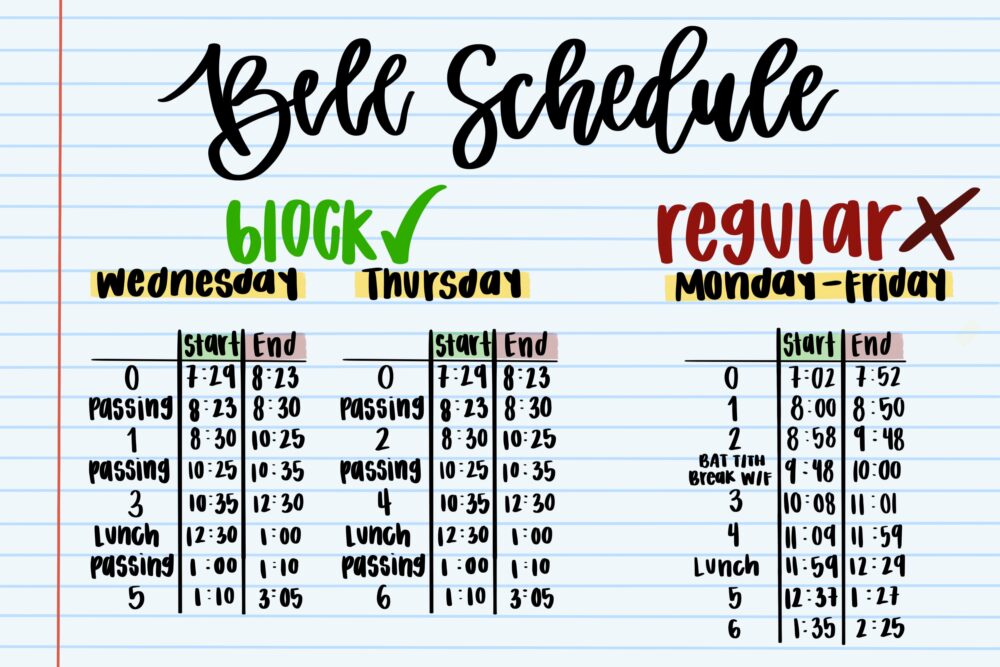
By Anneliese Duong
Teachers at Fountain Valley High School (FVHS) voted two weeks ago to consider only traditional bell schedules as part of the process to determine a new schedule for next year. This means that anyone who was hoping for a block schedule won’t see one here at FVHS for at least a couple of years. And while a majority of students likewise expressed a preference for a traditional schedule (thank you teachers for making space for our students’ opinions), there are many benefits to a block schedule that some may not be considering.
The implementation of block schedule will better prepare students for college, as a college student’s class schedule is similar to block schedule. Classes typically take place for two to three days a week for two to three hours a day. It allows for flexibility in which students can focus on other priorities such as work and extracurricular activities while focusing on smaller chunks of learning. By the time college hits, FVHS students can easily adjust and already know how to manage this sort of time in their classes.
With longer blocks of class time, students can build relationships with their peers and teachers since they are not jumping from class to class every hour. There is more time to talk and work together in small groups. Especially for upperclassmen who haven’t found a passion or career path yet, the time spent in class can spark interest. From projects and labs to conversations with teachers and students, the quality time from the curriculum can influence students’ decisions when choosing a career or major for college.
It is also much better for students to learn at a pace that will actually let them get into the flow of learning. Some teachers have mentioned how their lesson plan has to be cut short for the day, which leads to students leaving the classroom confused. Instead of where every hour is a new subject and new material, the flow would improve with fewer classes and more time devoted to instruction.
Some subjects such as math and world language need that extra time to fit in constant practice and repetition though.
While repetition and practice are necessary for these classes, students have a small break to actually process the information with a block schedule. These teachers can assign small practices such as warm ups through the Canvas quiz feature or quizziz.com on days off to keep students engaged.
With a block schedule, students have to consider that other teachers can still assign homework every day despite having to only attend around three to four classes a day. Except, teachers likely wouldn’t assign homework every day of the week. Instead, the assignments would be due the day the students return to class. Several teachers last year chose to do that and it helped lessen the workload.
With these reasons in mind, last year’s temporary schedule is an example of how a block schedule can benefit the students. From better time management to more flexibility in learning, students were able to control their workload.
For the sake of improving our learning as students, consider a block schedule.
Hien Bui and Natalie Tran contributed to this article.





